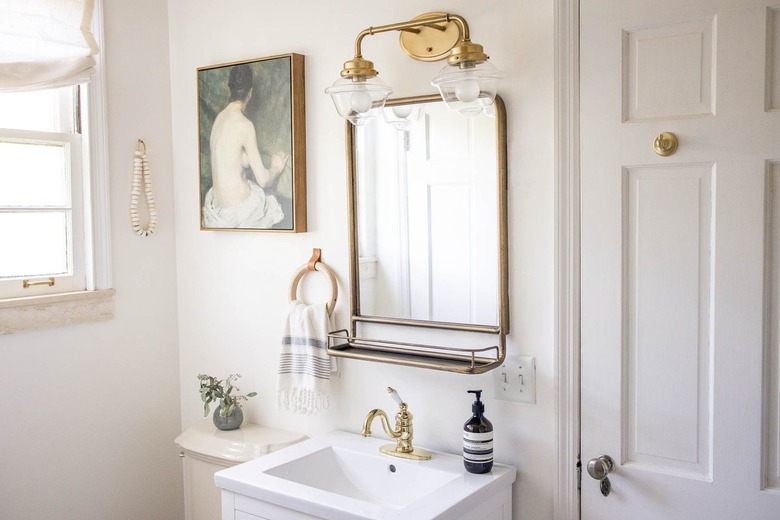How To Find Water Lines In Walls
Water lines are part of your home's skeleton and are at the heart of its plumbing structure. The most important role of water lines in walls is to supply hot and cold water to all your fixtures. Water lines live behind walls, so before you start a home project or attempt to repair a leak, it's essential to find the water lines in the walls.
Tip
You can find water lines in walls by using a metal-detecting stud finder, tracing pipe pathways and cutting holes in the wall.
Importance of Finding Water Lines in Walls
There are two main reasons to locate water lines in walls. The first is if you're planning a home improvement project and the other is if you suspect that water is leaking somewhere in your home. Telltale signs of a leak include mold, visible moisture, a drop in water pressure, an unusually high water bill and peeling paint and wallpaper. Leaks can spread to other rooms, so finding the source takes some investigation.
There are five kinds of water pipes: ABS, copper, galvanized, PEX and PVC. If you drill into a wall without checking for water lines first, you could seriously damage your plumbing. Damaged pipes can leak significantly, which might end up costing you a lot of money in repairs. Experts recommend opening up the wall as the most foolproof method, but this may not be necessary for smaller jobs like installing a toilet paper holder.
Preparation and Using Stud Finders
Prepare for locating water lines in walls by turning off all the appliances that use water in your home. This includes the washing machine, showers, dishwashers and any outside sprinklers. Then, turn off the main water valve to your home. Be sure to tell everyone else present about your project so they don't turn the water back on without your knowledge.
The first tool you'll need is a stud finder that can detect metal. Locate where a given fixture's pipes enter the wall and run the stud finder nearby. If you see any wet spots, note them with colored tape. Then, go outside.
Once outside, look for any pipes that are visible exiting the home and take pictures if needed to aid your memory. Compare the pictures to your walls inside; this should tell you where your drain pipes are located.
Opening Up the Wall
If you're having a hard time finding a leak, you may want to buy a moisture meter. These tools are relatively inexpensive and measure moisture accurately. They can scan the wall to help establish where a leak is coming from.
Once you've found the source of the leak and marked off the studs, draw a perimeter around the area that you need to cut through. There may be electrical wires inside the wall, so score the area first with a utility knife. Then, cut out the hole with a drywall saw.
Look into the space with a flashlight to see if there's more water damage. If you see water in the area, follow it back to see where it's coming from. You may have to cut out more of the wall to find the source.
Contacting a Professional
Homeowners can often repair minor leaks themselves, but in certain cases, you'll need to contact a plumber. If you've cut out several holes and still can't find the leak, or if you find considerable water damage, calling a professional might be the best option.
Do-it-yourselfers can repair leaky plumbing joints with joint compound, but these fixes are usually temporary. If you've already done this and you're still seeing signs of a leak or need to proceed with a renovation, call a plumber. A permanent, stable repair and help with locating your water lines before a renovation will save you time and money in the long run.
